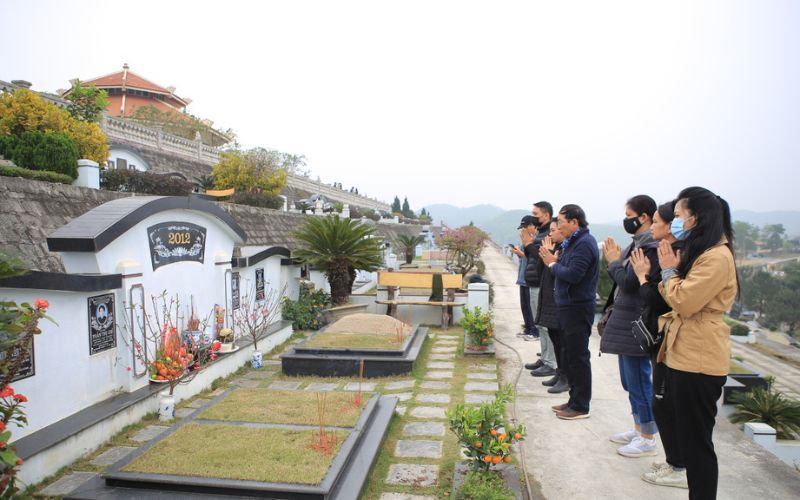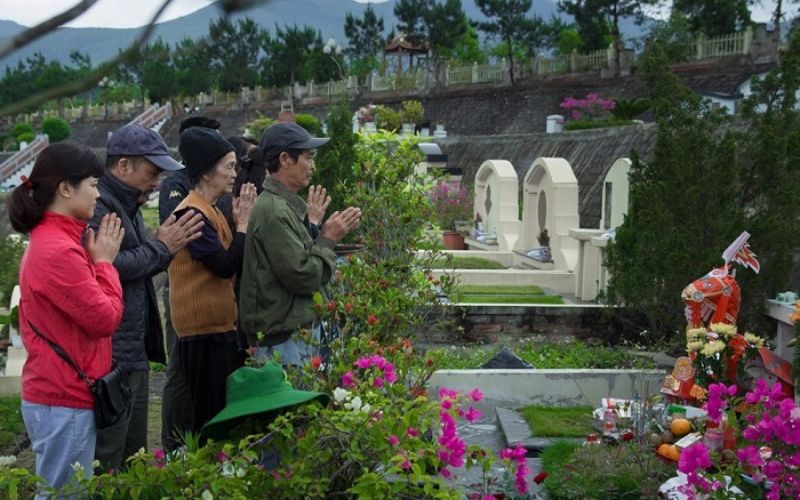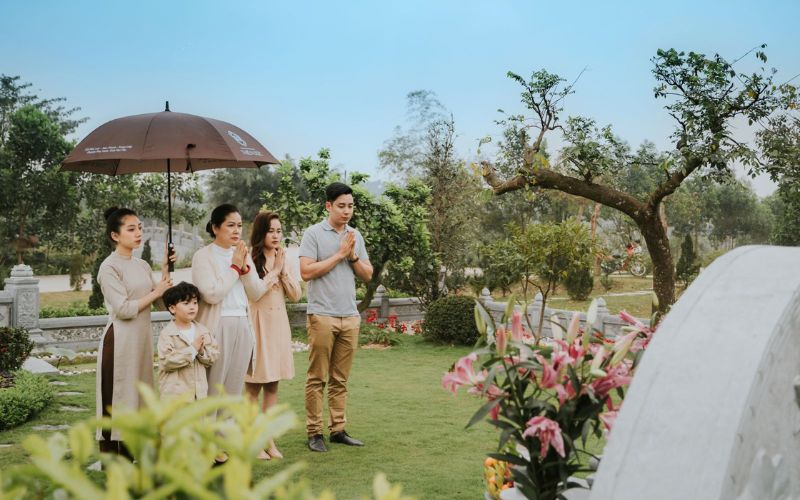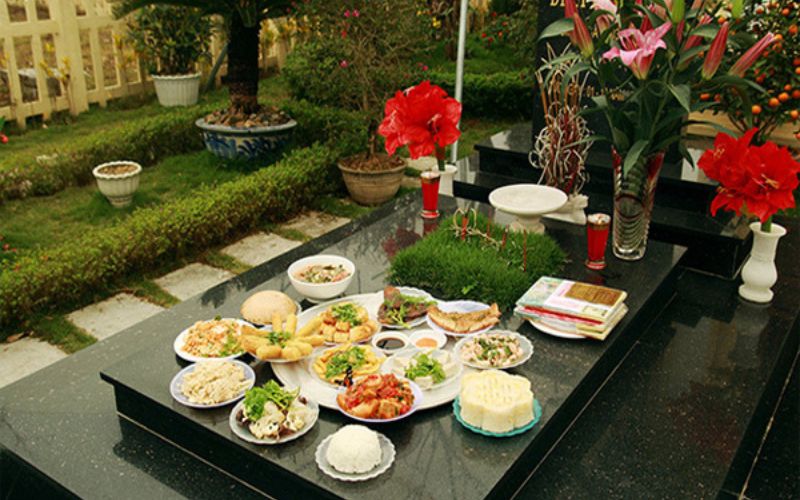Cung te mo is a cherished tradition in Vietnamese culture, honoring ancestors and demonstrating filial piety. While it is a widely practiced ceremony, many are unfamiliar with its deeper significance and the rituals involved. Let’s delve into this rich tradition and explore the meaning and preparation behind the te mo ceremony.
1 Understanding the Te Mo Ceremony
Variations of the Te Mo Ceremony
Vietnamese tradition encompasses several types of te mo ceremonies, each with its own significance:
- Te Mo Dau Nam: Kicking off the new year, this ceremony expresses gratitude and seeks blessings for the days ahead.
- Te Mo Cuoi Nam: Capping off the year, this ritual honors ancestors and thanks the gods for their protection.
- Te Mo Khanh Thanh: Inaugurating a new tomb or mausoleum, seeking blessings and protection for the departed loved ones.
- Te Mo Ket Phat: Feng shui-based ceremony performed for tombs with specific characteristics, bringing good fortune to descendants.
- Te Mo Ket Moi: Securing protection for remains with a sturdy layer of glue.
- Te Mo Tam Dai: Paying respects to three generations of family ancestors.
- Te Mo 3 Ngay and Gi: Memorial services held on the third day and death anniversary of the deceased.
- Te Mo Ram Thang 7: Special ceremony during the seventh lunar month, when the gates of hell are believed to open, allowing departed souls to visit their living relatives.
- Te Mo Dong Ho, Toc: Clan or tribe-wide ceremony, uniting to honor their shared ancestors.
Among these, the Te Mo Cuoi Nam and Te Mo Khanh Thanh ceremonies are often accorded special attention and considered the most significant.
 The Diverse Te Mo Ceremonies
The Diverse Te Mo Ceremonies
Reference: At home or cemetery, updated for 2023
Te Mo Cuoi Nam Ceremony
The Te Mo Cuoi Nam ritual is a way to honor and remember ancestors, expressing reverence and gratitude. In Vietnamese belief, the deceased continue their journey in the afterlife, and this ceremony invites them to join the family for a meal, thanking the gods for providing a peaceful resting place.
 Te Mo Cuoi Nam Ceremony
Te Mo Cuoi Nam Ceremony
Explore More: Vietnamese Traditional Customs and Practices
Te Mo Khanh Thanh Ceremony
The Te Mo Khanh Thanh ceremony is a pivotal ritual conducted after establishing a new resting place for departed ancestors. It is believed that proper rituals showcase respect and sincerity to the gods, who have granted peace to the ancestors on this land.
 Te Mo Khanh Thanh Ceremony
Te Mo Khanh Thanh Ceremony
Timing of the Te Mo Ceremony
The timing of the Te Mo ceremony varies across regions, but the Te Mo Cuoi Nam is typically held between the 23rd and 30th of the twelfth lunar month. As for the Te Mo Khanh Thanh, it is performed upon completion of construction or on an auspicious day chosen based on the family’s age and luck.
 Timing is Key for Te Mo Ceremonies
Timing is Key for Te Mo Ceremonies
Distinguishing Between Te Mo and Tao Mo
Te Mo is a ceremony to express gratitude to the gods for caring for the land where ancestors rest. It is usually held toward the year-end. Conversely, Tao Mo is a ritual to clean and maintain ancestors’ graves, believed to bring prosperity to descendants. It is typically held during the third lunar month.
 Understanding the Difference
Understanding the Difference
2 Preparing Offerings for Te Mo
Simplicity is key for Te Mo offerings, but sincerity and respect are essential. Typical offerings include:
- Incense and Candles: Mainstays of Vietnamese ancestral worship.
- Flowers and Fruits: Opt for roses, lilies, and white chrysanthemums, or favorites of the deceased.
- White Rice: Symbol of purity and respect.
- Betel and Areca Nuts: Traditional Vietnamese offerings.
- Alcohol and Tea: Conveying hospitality and respect.
- Vang Ma: Paper offerings with gold and silver ingots and coins in specific arrangements.
 Preparing Sincere Offerings
Preparing Sincere Offerings
3 Te Mo Cuoi Nam Prayer
Prayer for the Te Mo Ceremony Outside the Cemetery
Nam mo a di da phat! (Recited 3 times)
With respect, we invoke:
– Quan duong xa tha dia chinh than
– Tha dia Ngu phuong Long mach Ton than,
– Tien than Chu Tuc, Hau than Huyen Vu, Ta than Thanh Long, Hau than Bach Ho
– Liet vi Ton than cai quan o xa nay.
With respect, we invoke the spirits of ……….
Today, on the … day of … month … year …,
We, ……………, humbly offer these items, bearing respect and gratitude. We inform the Chu vu Ton Than of our intention to hold a te mo ceremony for our beloved ancestors.
Our ancestors, ……………, rest here. We are grateful for the protection and blessings you have bestowed, allowing them peace.
We also thank you for the blessings our family has received through their guidance and support. As the year draws to a close, we present these offerings, expressing our deepest gratitude and respect.
We humbly invite the Chu vu Ton Than to accept our offerings and witness our sincerity.
We pray that our ancestors accept these humble offerings and our sincere prayers. May they continue to guide and protect our entire family, from the youngest to the oldest, bringing us joy and good health.
We offer the following to our ancestors: ….(list offerings).
With incense and a respectful heart, we bow before you.
Can cao.
Te Mo Cuoi Nam Prayer Example 1
(Seeking permission for ancestors to return home for the new year celebration)
With respect, we invoke:
– Ngai Kim nien Duong cai Thai tu Chi duc Ton than, Kim nien hanh binh, Cong tao phan quan.
– Ngai ben canh Thanh hoang Chu vu Dai vuong.
– Ngai ben xa than linh Tha dia Ton than.
– Cac ngai Ngu phuong, Ngu thu long mach Ton than, Tien Chu tuc, Hau Huyen vu, Ta Thanh long, Hau Bach ho cung liet vi Ton Than cai quan o trong xa nay.
We, (wife’s name), ……………………….. and (husband’s name), ………………………..
Residing at: ……………………………………………………………………………………
With sincerity, we offer these items and respectfully invite the spirits of our ancestors: ……………………………………………………………………………………
(Names and details of the deceased): Age at death ……………………………………………………………………………………
Buried at: ……………………………………………………………………………………
Today, as the year nears its end (or any specific occasion), we bow before the local gods and spirits, grateful for the peaceful resting place provided for our ancestors. We thank the Thanh hoang ben tha for their protection and blessings.
Respectfully, we request permission for our ancestors to return home and join us in welcoming the new year. We offer our sincere gratitude for their guidance and support, which has brought us prosperity and progress.
With incense and a respectful heart, we bow before you.
Phuc duy can cao! (Repeated 3 times, followed by burning gold and silver paper offerings)
Te Mo Cuoi Nam Prayer Example 2
(Similar to Example 1, requesting permission for ancestors to return home for the new year)
With respect, we invoke:
– Ngai Kim nien Duong cai Thai tu Chi duc Ton than, Kim nien hanh binh, Cong tao phan quan.
– Ngai ben canh Thanh hoang Chu vu Dai vuong.
– Ngai ben xa than linh Tha dia Ton than.
– Cac ngai Ngu phuong, Ngu thu long mach Ton than, Tien Chu tuc, Hau Huyen vu, Ta Thanh long, Hau Bach ho cung liet vi Ton Than cai quan o trong xa nay.
We, (wife’s name), ……………………….. and (husband’s name), ………………………..
Residing at: ……………………………………………………………………………………
With sincerity, we offer these items and respectfully invite the spirits of our ancestors: ……………………………………………………………………………………
(Names and details of the deceased): Age at death ……………………………………………………………………………………
Buried at: ……………………………………………………………………………………
Today, as the year nears its end (or any specific occasion), we bow before the local gods and spirits, grateful for the peaceful resting place provided for our ancestors. We thank the Thanh hoang ben tha for their protection and blessings.
Respectfully, we request permission for our ancestors to return home and join us in welcoming the new year. We offer our sincere gratitude for their guidance and support, which has brought us prosperity and progress.
With incense and a respectful heart, we bow before you.
Phuc duy can cao! (Repeated 3 times, followed by burning gold and silver paper offerings)
Te Mo Cuoi Nam Prayer Example 3
“Nam mo a di da Phat! (Recited 3 times)
– With respect, we invoke the Nine Directions of Heaven, Ten Directions of Buddha, and Ten Directions of Buddha.
– With respect, we invoke the Great King of the Underground Palace, Bodhisattva.
– With respect, we invoke the Kim Nien Duong Cai Thai Tu Chi Duc Ton Than, Kim Nien Hanh Binh, and Cong Tao Phan Quan.
– With respect, we invoke the Ben Cah Thanh Hoang Chu Vu Dai Vuong Quan Cai Noi Nghia Trang.
– With respect, we invoke the Ben Xa Than Linh Tha Dia Ton Than.
– With respect, we invoke the Ngu Phuong, Ngu Thu Long Mach Ton Than, Tien Chu Tuc, Hau Huyen Vu, Ta Thanh Long, Hau Bach Ho, and all the Ton Than who preside over this cemetery.
– With respect, we invoke the spirits of our ancestors:…………………..
Today, on the …….. day of the twelfth lunar month, as one year ends and another begins, we, the descendants (list names), offer these items with sincerity: ……………..
Residing at: ……………..

































